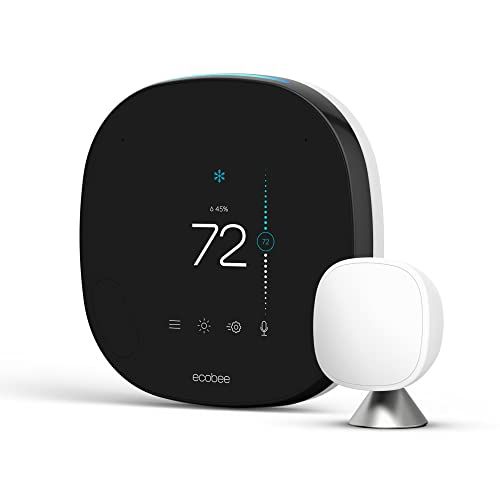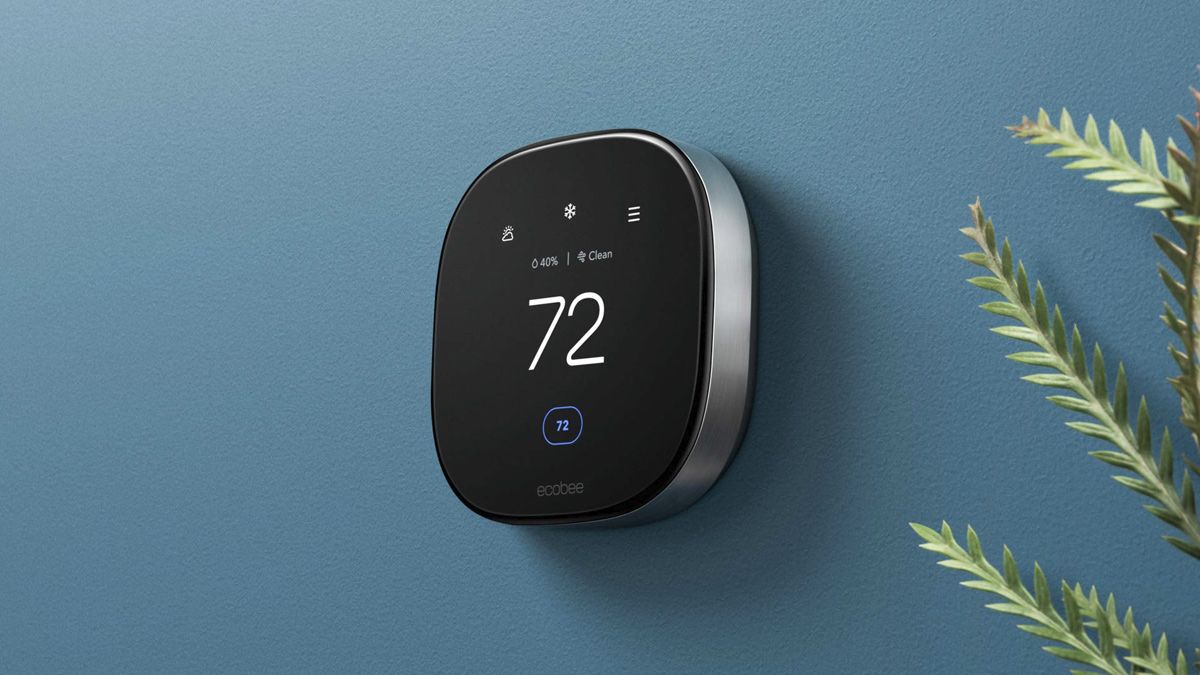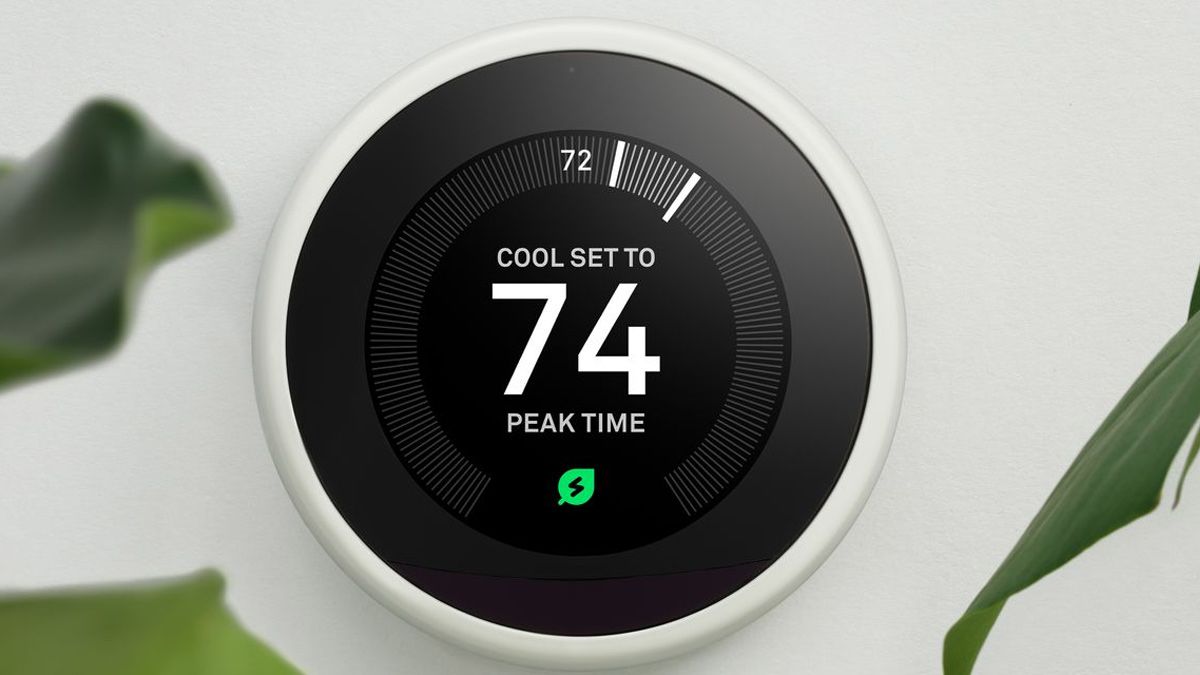There are a greater number of smart thermostats on the market than ever before, and one of the selling points is that they will save you money. But will they? Here are some key things to consider.
Smart Thermostats Automate Savings
We can't talk about whether or not a smart thermostat will save you money or give you a better user experience without talking about the single biggest element: human behavior.
The original thermostats were completely manual, and you had to, as the name implies, manually adjust them. Many homes still have a manual thermostat.
With a manual thermostat, if you want to save money by turning the thermostat down in the winter at night or while you're at work, you'd have to do so consistently every time you go to bed or leave the house. Same thing with the AC in the summer. Forget to set it back or turn it up, and there are no savings.
The same can be said for programmable thermostats. Many people who argue against the utility of smart thermostats will quickly tell you that anything you can do with a smart thermostat you can do with a manual thermostat if you're disciplined enough or with a programmable thermostat, again, if you're disciplined enough to program it and use it consistently.
Except in the real world, people don't program their thermostats consistently or use them correctly. This 2014 study is particularly interesting because the self-reported data was correlated with photos the participants took of their thermostats to confirm what state the thermostat was in.
The takeaway? Around 40% of the people surveyed didn't even use the program functions, and another 33% had the programmable thermostat set to "Hold" which locks in a given temperature setting and overrides the program until the user turns off the hold.
So only roughly a quarter of the people with programmable thermostats were actually using them correctly in the first place. This data aligns with earlier data going back to 2003, indicating that programmable thermostats were great in theory but that consumers simply weren't using them effectively (or at all).
Ultimately, the whole disciplined-user model falls apart when observed under real-world conditions. Sure, there are people out there who religiously adjust their thermostats or consistently change the programming of their programmable thermostats to match the seasons (and they don't use the Hold function as a crutch). But those people are clearly in a minority. If you're one of them and you have a very consistent daily schedule all year long, then perhaps a smart thermostat won't save you any money.
But right out of the gate, a smart thermostat is positioned to save everybody else money simply because the features of the smart thermostat, working automatically in the background, will be more consistent and effective than relying on human input.
The U.S. government Energy Star initiative estimates that Energy Star-certified thermostats save the average household around 8% on their heating and cooling bills. Google estimates users of its Nest Learning Thermostat save 10-12% on heating and 15% on cooling costs. Ecobee estimates that its users save 26% on average.
The average American household spends $2200 a year on energy bills, and roughly half of that goes to heating and cooling. So based on the savings estimates above (and the use of the energy-saving features smart thermostats comes packaged with), it's reasonable to expect a payoff point in anywhere from 1-3 year if you use the thermostat to its full potential.
These Features Help You Save with a Smart Thermostat
If you buy a smart thermostat and immediately turn off all the energy-saving functions, lock it to a single temperature, and never take advantage of all the cool features a smart thermostat affords you, then you're not going to save any money, of course.
But thankfully, the default settings on a smart thermostat are already geared toward saving energy (and thus money). Further, if you take the time to go through the features list for your particular model, you'll find plenty of ways to further fine-tune your savings.
Here are some settings and features directly linked to saving both short and long-term savings that you should look for right away.
Smart Scheduling
Many smart thermostats include a smart schedule feature which is essentially a programmable thermostat on steroids that programs itself.
When enabled, this feature will monitor how you use your home---when people come and go, what temperatures you adjust your home to for comfort, and so on---and begin automatically handling everything for you.
If you pair any sort of smart scheduling with other features like time-of-use optimized heating and cooling, the system can work towards maximizing your comfort while minimizing the amount of energy and money it takes to do so.
Occupancy Sensing
Whether your thermostat uses sensors or relies on your phone to tell if you are home or away, take advantage of it. Instead of having to remember to turn the temperature up or down, the system will just auto-magically detect if you are home or not.
So whether you're just out all day at the beach or you headed out of town for the weekend and forgot to adjust the thermostat, it'll take care of it for you.
Time-Of-Use Savings
If your local utility offers off-peak energy usage---and most do, especially in the summer---you can really take advantage of it with a smart thermostat. This feature is often called "time-of-use" as your billing is based on what time of day you use the energy, but may also be called "peak time," "off-peak use," or other similar terms.
While you can set up a schedule the old-fashioned way to take advantage of supercooling your home at night, for instance, many utility companies offer opt-in programs where you can link your thermostat to your utility.
They will cool/heat your home when the energy is cheapest and adjust the thermostat to save energy and money when energy is at peak price.
Weather Tracking and Automatic Adjustment
The vast majority of smart thermostats on the market can display the local weather on their displays. The really clever ones, like the ecobee SmartThermostat won't just tell you what the weather it---it will act on it.

ecobee Smart Thermostat
The ecobee SmartThermostat makes scheduling off-peak times and automatically adjusting your thermostat for comfort a breeze.
If there is a heatwave on the horizon, it will cool your home in advance to compensate and do the same in advance of a cold snap.
Whatever thermostat you end up with, however, it pays to really pore over the settings menus and options to ensure you're not leaving any great features on the table. For example, it would be easy to overlook the Sunblock feature on the Nest Learning Thermostat.
But if your thermostat is on a wall that gets direct sunlight, it's an incredibly handy little feature that automatically compensates for the way the sun heats up the thermostat and surrounding wall so your home doesn't end up too hot or too cold as a result.
Maintenance Reminders and Alerts
On the simple side of things, your smart thermostat can bug you to change out the filters on your forced-air system or perform other routine maintenance. Not only do clean filters make your HVAC system function more efficiently, but doing so extends the life of the system. When a replacement blower assembly can cost upwards of $500, anything you can do to squeeze out more time before a service call is worthwhile.
On the more complex side of things, some smart thermostats will actively monitor the health of the system and notify you if something seems off. If the system is calling for heating or cooling, for example, and nothing is happening, then it will notify you that something is wrong with your furnace or air conditioner.
And in the most advanced cases, you can link your smart thermostat to a local service company for automatic monitoring and servicing. If your furnace burner keeps misfiring or your AC compressor keeps short cycling, for instance, your thermostat can notify the service company. A service call for a minor part or a tuneup is much cheaper than replacing a completely blown AC unit, after all.
In the end, even if you don't go out of your way to customize and tweak your smart thermostat experience, you're still bound to save, though. The basics of optimized heating and cooling coupled with simple changes like your thermostat sensing when you are home or not will yield big savings over time.


